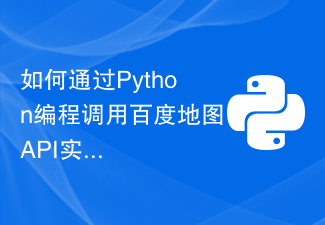
每当对对象调用wait()方法时,它都会导致当前线程等待,直到另一个线程调用notify()或notifyAll( ) 该对象的方法,而 wait(long timeout) 导致当前线程等待,直到另一个线程调用 notify() 或 notifyAll( ) 该对象的方法,或者已过了指定的超时时间。
wait()
在下面的程序中,当 wait() 在对象上调用,线程从运行状态进入等待状态。它等待其他线程调用 notify() 或 notifyAll() 才能进入可运行状态,将会形成死锁。
示例
class MyRunnable implements Runnable {
public void run() {
synchronized(this) {
System.out.println("In run() method");
try {
this.wait();
System.out.println("Thread in waiting state, waiting for some other threads on same object to call notify() or notifyAll()");
} catch (InterruptedException ie) {
ie.printStackTrace();
}
}
}
}
public class WaitMethodWithoutParameterTest {
public static void main(String[] args) {
MyRunnable myRunnable = new MyRunnable();
Thread thread = new Thread(myRunnable, "Thread-1");
thread.start();
}
}输出
In run() method
wait(long)
在下面的程序中,当对对象调用 wait(1000)时,线程从运行状态进入等待状态,即使在超时时间过后没有调用notify()或notifyAll()线程也会从等待状态进入可运行状态。
示例
class MyRunnable implements Runnable {
public void run() {
synchronized(this) {
System.out.println("In run() method");
try {
<strong> this.wait(1000);
</strong> System.out.println("Thread in waiting state, waiting for some other threads on same object to call notify() or notifyAll()");
} catch (InterruptedException ie) {
ie.printStackTrace();
}
}
}
}
public class WaitMethodWithParameterTest {
public static void main(String[] args) {
MyRunnable myRunnable = new MyRunnable();
Thread thread = new Thread(myRunnable, "Thread-1");
thread.start();
}
}输出
In run() method Thread in waiting state, waiting for some other threads on same object to call notify() or notifyAll()
以上是在Java中,我们什么时候可以调用Thread的wait()和wait(long)方法?的详细内容。更多信息请关注PHP中文网其他相关文章!
 如何使用Python调用百度地图API实现地理位置查询功能?Jul 31, 2023 pm 03:01 PM
如何使用Python调用百度地图API实现地理位置查询功能?Jul 31, 2023 pm 03:01 PM如何使用Python调用百度地图API实现地理位置查询功能?随着互联网的发展,地理位置信息的获取和利用越来越重要。百度地图是一款非常常见和实用的地图应用,它提供了丰富的地理位置查询服务。本文将介绍如何使用Python调用百度地图API实现地理位置查询功能,并附上代码示例。申请百度地图开发者账号和应用首先,你需要拥有一个百度地图开发者账号,并创建一个应用。登录
 源码探秘:Python 中对象是如何被调用的?May 11, 2023 am 11:46 AM
源码探秘:Python 中对象是如何被调用的?May 11, 2023 am 11:46 AM楔子我们知道对象被创建,主要有两种方式,一种是通过Python/CAPI,另一种是通过调用类型对象。对于内置类型的实例对象而言,这两种方式都是支持的,比如列表,我们即可以通过[]创建,也可以通过list(),前者是Python/CAPI,后者是调用类型对象。但对于自定义类的实例对象而言,我们只能通过调用类型对象的方式来创建。而一个对象如果可以被调用,那么这个对象就是callable,否则就不是callable。而决定一个对象是不是callable,就取决于其对应的类型对象中是否定义了某个方法。如
 PHP摄像头调用技巧:如何实现多摄像头切换Aug 04, 2023 pm 07:07 PM
PHP摄像头调用技巧:如何实现多摄像头切换Aug 04, 2023 pm 07:07 PMPHP摄像头调用技巧:如何实现多摄像头切换摄像头应用已经成为许多Web应用的重要组成部分,例如视频会议、实时监控等等。在PHP中,我们可以使用各种技术来实现对摄像头的调用和操作。本文将重点介绍如何实现多摄像头的切换,并提供一些示例代码来帮助读者更好地理解。摄像头调用基础在PHP中,我们可以通过调用JavaScript的API来实现摄像头的调用。具体来说,我们
 java中sleep()和wait()的区别是什么Apr 29, 2023 am 08:37 AM
java中sleep()和wait()的区别是什么Apr 29, 2023 am 08:37 AM区别说明1、wait()是Object的方法,sleep()是Thread的方法。2、wait()必须采用同步方法,不需要sleep()方法。3、线程在同步方法中执行sleep()方法,不释放monitor锁,wait()方法释放monitor锁。短暂休眠后,sleep()方法会主动退出阻塞,而wait()方法需要在没有指定wait时间的情况下被其他线程中断才能退出阻塞。实例importjava.text.SimpleDateFormat;importjava.util.Date;publicc
 如何通过Python编程调用百度地图API实现地图展示功能?Aug 02, 2023 pm 08:27 PM
如何通过Python编程调用百度地图API实现地图展示功能?Aug 02, 2023 pm 08:27 PM如何通过Python编程调用百度地图API实现地图展示功能?随着互联网的快速发展,地图应用成为了我们生活中不可或缺的一部分。而百度地图作为国内最大的地图应用之一,为我们提供了丰富的服务和API接口,可以很方便地实现地图展示功能。本文将介绍如何通过Python编程调用百度地图API来实现地图展示功能,并给出相应的代码示例。首先,我们需要在百度开放平台上注册一个
 如何解决PHP开发中的外部资源访问和调用Oct 08, 2023 am 11:01 AM
如何解决PHP开发中的外部资源访问和调用Oct 08, 2023 am 11:01 AM如何解决PHP开发中的外部资源访问和调用,需要具体代码示例在PHP开发中,我们经常会遇到需要访问和调用外部资源的情况,比如API接口、第三方库或者其他服务器资源。在处理这些外部资源时,我们需要考虑如何进行安全的访问和调用,同时保证性能和可靠性。本文将介绍几种常见的解决方案,并提供相应的代码示例。一、使用curl库进行外部资源调用curl是一个非常强大的开源库
 matlab如何调用m文件-matlab调用m文件的方法Mar 04, 2024 pm 01:49 PM
matlab如何调用m文件-matlab调用m文件的方法Mar 04, 2024 pm 01:49 PM有很多朋友还不知道matlab如何调用m文件,所以下面小编就讲解了matlab调用m文件的方法,有需要的小伙伴赶紧来看一下吧,相信对大家一定会有所帮助哦。1、首先打开matlab软件,在主界面中点击“打开”,如下图所示。2、然后选择一个需要打开的m文件,选择打开,如下图所示。3、接着在编辑器中看m文件的文件名和变量数目,如下图所示。4、可以在命令行中输入m文件名后括号加变量值,就可以调用,如下图所示。5、最后就可以成功调用m文件,如下图所示。上面就是小编为大家带来的matlab如何调用m文件的全
 如何使用Java调用WebServiceDec 29, 2023 pm 02:32 PM
如何使用Java调用WebServiceDec 29, 2023 pm 02:32 PM使用Java调用WebService的方法步骤,需要具体代码示例Web服务是一种基于Web的应用程序接口,通过网络提供各种功能。在Java开发中,我们经常需要使用Web服务来实现与其他系统的交互。本篇文章将介绍如何使用Java调用WebService,并提供具体的代码示例。一、了解WebServiceWebService是一种标准化的通信协议,使用XML格式


热AI工具

Undresser.AI Undress
人工智能驱动的应用程序,用于创建逼真的裸体照片

AI Clothes Remover
用于从照片中去除衣服的在线人工智能工具。

Undress AI Tool
免费脱衣服图片

Clothoff.io
AI脱衣机

AI Hentai Generator
免费生成ai无尽的。

热门文章

热工具

mPDF
mPDF是一个PHP库,可以从UTF-8编码的HTML生成PDF文件。原作者Ian Back编写mPDF以从他的网站上“即时”输出PDF文件,并处理不同的语言。与原始脚本如HTML2FPDF相比,它的速度较慢,并且在使用Unicode字体时生成的文件较大,但支持CSS样式等,并进行了大量增强。支持几乎所有语言,包括RTL(阿拉伯语和希伯来语)和CJK(中日韩)。支持嵌套的块级元素(如P、DIV),

SecLists
SecLists是最终安全测试人员的伙伴。它是一个包含各种类型列表的集合,这些列表在安全评估过程中经常使用,都在一个地方。SecLists通过方便地提供安全测试人员可能需要的所有列表,帮助提高安全测试的效率和生产力。列表类型包括用户名、密码、URL、模糊测试有效载荷、敏感数据模式、Web shell等等。测试人员只需将此存储库拉到新的测试机上,他就可以访问到所需的每种类型的列表。

禅工作室 13.0.1
功能强大的PHP集成开发环境

安全考试浏览器
Safe Exam Browser是一个安全的浏览器环境,用于安全地进行在线考试。该软件将任何计算机变成一个安全的工作站。它控制对任何实用工具的访问,并防止学生使用未经授权的资源。

PhpStorm Mac 版本
最新(2018.2.1 )专业的PHP集成开发工具






